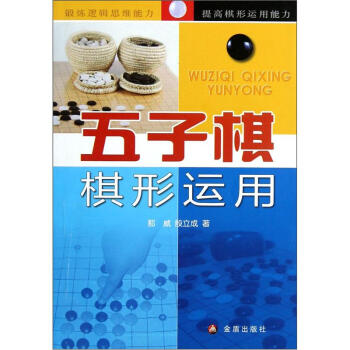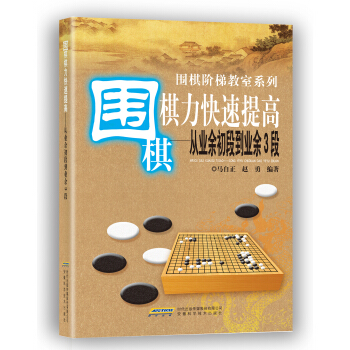具体描述
編輯推薦
河界三分闊,計謀萬丈深。一手妙棋,當韆仞之高;小小棋盤,藏玄機無限;黑白世界,似萬象人間。麵對對弈的成敗得失,體味人生搏擊的酸辣苦甜,誰能不感慨萬韆?棋林高手總能在行棋布局之中,注入對生活哲理的發現。人生真諦的感悟,卻又升華瞭對棋道的深刻理解。“棋人閤一”,這就是高手的意境吧! 國際象棋是世界上最古老的博弈遊戲之一。 內容簡介
《走進國際象棋殿堂》,本書內容:走進國際象棋世界,基本殺法和基礎殘局…… 作者簡介
王青偉,國傢大師,國傢運動健將,國傢高級教練,青島市國際象棋協會常務副秘書長,青島青偉國際象棋隊總教練,湖南工業大學客座教授。
梁誌華,女子國際大師,國際棋聯教練,國際棋聯裁判,珠海市國際象棋協會秘書長,澳門隊教練,在暨南大學、北京師範大學珠海學院、北京理工大學珠海學院開設瞭《國際象棋及棋文化》課程。 目錄
第一章 走進國際象棋世界
第一節 國際象棋起源
第二節 國際象棋簡史
第三節 棋盤和棋子擺法
第四節 棋子走法與吃法
第五節 兵的兩種特殊規則
第六節 特殊走法:王車易位
第七節 勝、負、和的規定
第八節 記錄方法
第九節 棋子的相對子力價值與換算方法
第二章 基本殺法和基礎殘局
第一節 用後殺王單後殺單王
第二節 用車殺王單車殺單王
第三節 用象殺王雙象殺單王
第四節 用馬殺王雙馬和單王
第五節 馬象殺單王
第三章 兵類殘局
第一節 用兵殺王
第二節 遠方通路兵
第三節 方形區法則
第四節 對王戰術
第五節 關鍵格
第六節 兵的突破
第四章 基本戰術
第一節 擊雙
第二節 牽製
第三節 閃擊
第四節 消除保護
第五節 騰挪
第六節 引人
第七節 引離
第八節 開綫
第九節 堵塞
第十節 逼和
第十一節 長將
第十二節 小兵升變
第五章 開局原理
第一節 開局原則
第二節 開局名稱
第三節 開局簡介
第六章 人機大戰
第一節 人機大戰大事記
第二節 人機大戰經典對局
第七章 名局賞析 前言/序言
《 chess: from beginner to master 》 This comprehensive guide is designed for anyone with a desire to conquer the complexities of chess, from absolute novices to ambitious intermediate players seeking to elevate their game. The book offers a meticulously structured journey, unraveling the game's fundamental principles and progressively introducing advanced strategies and tactical nuances. Part I: The Foundation of Chess Mastery Chapter 1: A Grand Introduction to the Royal Game: We begin by setting the stage, exploring the rich history and enduring appeal of chess. You'll discover its origins, its evolution through the ages, and its profound impact on culture and intellect. This chapter will ignite your passion for the game and provide context for the journey ahead. Chapter 2: Understanding the Battlefield: The Chessboard and Pieces: This section delves into the essential components of chess. You'll learn the unique movement patterns of each piece – the stoic King, the powerful Queen, the agile Rook, the diagonal-striking Bishop, the versatile Knight, and the humble yet crucial Pawn. We'll meticulously explain their capturing abilities, special moves like castling and en passant, and the critical concept of piece value, understanding when and how to exchange pieces effectively. Chapter 3: The Art of Opening Moves: Building a Solid Framework: The opening is where the strategic battle begins. This chapter introduces you to fundamental opening principles, emphasizing piece development, king safety, and controlling the center. We'll explore several popular and sound openings, explaining the underlying ideas and common plans associated with each. You’ll learn to navigate the initial stages of the game with confidence, avoiding early pitfalls and establishing a favorable position. Chapter 4: Essential Tactics: The Sharp Edge of Chess: Tactics are the short-term maneuvers that can win material or force checkmate. This chapter is dedicated to the most potent tactical motifs, including forks, pins, skewers, discovered attacks, and sacrifices. Through numerous illustrated examples and exercises, you’ll develop your ability to spot these opportunities and exploit them ruthlessly. Mastering these tactical weapons is paramount to consistently outmaneuvering your opponents. Chapter 5: Pawn Power and Pawn Structures: The Backbone of Your Game: Pawns, often overlooked, are the silent architects of chess strategy. This chapter explores the critical role of pawns in controlling squares, creating outposts, and forming strategic structures. You'll learn about common pawn formations, their strengths and weaknesses, and how to manipulate them to gain positional advantages. Understanding pawn play is essential for both attack and defense. Chapter 6: The End Game Begins: Mastering the Final Stages: The endgame is where precision and calculation become paramount. This section introduces you to the fundamental principles of endgame play, focusing on king activity, pawn promotion, and the strategic use of remaining pieces. We’ll cover essential checkmates with limited material and introduce key endgame positions that every player must know. Part II: Elevating Your Strategic Understanding Chapter 7: Positional Play: The Subtle Art of Long-Term Advantage: Beyond immediate tactics, positional play focuses on creating subtle advantages that can culminate in victory. This chapter explores concepts like pawn chains, open files, weak squares, and the harmonious coordination of your pieces. You'll learn how to identify and exploit positional weaknesses in your opponent's camp and how to build a dominant position over time. Chapter 8: King Safety: A Paramount Concern: Your king's safety is non-negotiable. This chapter delves deeper into various methods of protecting your king, including pawn shields, prophylactic moves, and coordinated defensive maneuvers. You'll understand the psychology of attacking and defending the king and learn to recognize threats before they materialize. Chapter 9: Advanced Opening Strategies: Tailoring Your Repertoire: Building upon the foundational openings, this chapter guides you in developing a personalized opening repertoire that suits your style of play. We'll discuss the principles of strategic opening selection, understanding transpositional possibilities, and how to respond to unexpected opponent choices. You'll learn to navigate the complexities of modern openings with greater confidence and creativity. Chapter 10: Mastering Piece Coordination: The Symphony of Your Army: Chess is a team game for your pieces. This chapter focuses on the art of making your pieces work together harmoniously. You'll learn how to create batteries, coordinate attacks, and develop an understanding of piece synergy that maximizes their combined power. Effective coordination transforms individual strengths into overwhelming force. Chapter 11: The Art of Defense: Resilience and Counterattack: Defense is not merely about blocking threats; it’s about surviving and finding opportunities to turn the tables. This chapter explores resourceful defensive techniques, including prophylaxis, creating counterplay, and the subtle art of passive defense that frustrates your opponent. You'll learn to weather storms and emerge stronger. Chapter 12: Middlegame Complexity: Navigating the Heart of the Battle: The middlegame is where strategy and tactics intertwine most dynamically. This chapter breaks down the common features of middlegame positions, including initiative, space advantage, and the interplay of attack and defense. You'll learn to formulate plans, assess imbalances, and execute complex maneuvers. Part III: Towards Masterful Play Chapter 13: Advanced Endgame Theory: The Science of Winning Positions: This section delves into the intricate world of advanced endgames. We'll explore critical endgame principles like triangulation, opposition, pawn races, and the decisive role of the king in winning scenarios. Mastering these theoretical endgames will provide you with a significant edge in close contests. Chapter 14: Psychological Warfare: The Mind Game of Chess: Chess is as much a mental battle as it is a strategic one. This chapter explores the psychological aspects of the game, including time management, dealing with pressure, analyzing your opponent's thinking, and maintaining composure. You'll learn to cultivate a winning mindset and overcome mental hurdles. Chapter 15: The Art of Calculation: Seeing Deeper and Further: Accurate calculation is the bedrock of strong chess. This chapter provides techniques for improving your calculation skills, including visualizing variations, pruning less promising lines, and recognizing forcing sequences. You'll learn to trust your calculations and make confident decisions under pressure. Chapter 16: Analyzing Your Own Games: The Path to Self-Improvement: The most effective way to improve is by learning from your mistakes. This chapter guides you through the process of analyzing your own games, identifying critical moments, understanding where you went wrong, and devising strategies to prevent similar errors in the future. Chapter 17: Training and Practice: Continual Growth: This final chapter offers practical advice on how to continue your chess journey. We'll discuss effective study methods, the benefits of joining chess clubs, participating in tournaments, and leveraging online resources. The pursuit of chess mastery is a continuous process, and this chapter will equip you with the tools for lifelong learning and improvement. Each chapter is rich with illustrative diagrams, clear explanations, and practical exercises designed to reinforce your learning. Whether you aspire to compete in tournaments, simply wish to understand the game at a deeper level, or aim to achieve the coveted title of master, this book will serve as your indispensable guide on the exhilarating path to chess excellence.






















